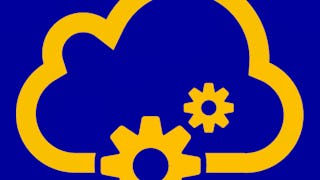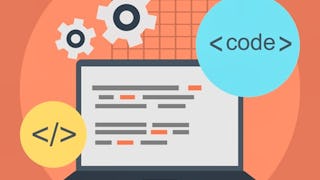This course equips learners with the practical skills and conceptual knowledge required to design, structure, and integrate modern web applications using a range of foundational and advanced technologies. Through progressive modules, learners will begin with the basics of XML and Core Java, gradually building toward hands-on implementation of HTML, CSS, and JavaScript for web interface design.


您将获得的技能
要了解的详细信息

添加到您的领英档案
July 2025
21 项作业
了解顶级公司的员工如何掌握热门技能

积累特定领域的专业知识
- 向行业专家学习新概念
- 获得对主题或工具的基础理解
- 通过实践项目培养工作相关技能
- 获得可共享的职业证书

该课程共有6个模块
This module introduces learners to the fundamental concepts of XML and its integration with Java. Through a progressive approach, students explore the basics of Java programming, object-oriented principles, and the role of XML in data interchange and configuration. The module concludes with an overview of enterprise application development using J2EE and the Model-View-Controller (MVC) design pattern, laying a solid foundation for advanced web application development.
涵盖的内容
10个视频4个作业
This module explores foundational web technologies used in enterprise-level Java applications, focusing on the server-side processing and data communication layers. Learners are introduced to Java Servlets for dynamic content handling and to middleware concepts, particularly the role of Enterprise JavaBeans (EJB) in distributed systems. The second half of the module deepens understanding of XML, its role in SOAP-based web services, and the critical components and structures that ensure effective communication between systems. Through these lessons, learners build a strong base in how modern Java-based applications manage data and business logic across web platforms.
涵盖的内容
6个视频3个作业
This module provides a comprehensive introduction to the foundational elements of web development. Learners explore how web technologies work, starting with the basic client-server model and moving into key web design principles used in creating user-centered websites. The module also covers the structure and syntax of HTML, emphasizing practical implementation techniques such as inserting images, designing layouts, and embedding content using frames. By the end of this module, learners will have a clear understanding of how to structure and present web content effectively using HTML and best practices in web design.
涵盖的内容
10个视频4个作业
This module introduces learners to the foundational concepts and techniques of Cascading Style Sheets (CSS) for styling web pages. It begins with the importance of CSS in modern web development and explores how CSS enables consistent and efficient control over the presentation layer. Learners will understand essential rules and structures for applying styles, including the use of selectors, declarations, and positioning. The module also covers core concepts such as the CSS Box Model and relative layout adjustments, culminating in practical applications like subscript rendering and design precision. By the end of this module, learners will be able to apply CSS to enhance the visual structure, consistency, and responsiveness of web interfaces.
涵盖的内容
5个视频3个作业
This module introduces learners to the dynamic aspects of modern web development by integrating client-side scripting and asynchronous communication. It begins with the principles of AJAX and the use of JavaScript and jQuery to communicate with web servers without reloading pages. The module also covers how to construct and handle XMLHttpRequests, explore source code interactions, and implement responsive web behavior. In the second half, learners will explore JavaScript fundamentals and how XML is used to structure and exchange data between systems. Through real examples and practical use cases, learners will gain the skills to build interactive, data-driven web applications.
涵盖的内容
7个视频3个作业
This module explores advanced uses of XML in enterprise and web development environments. Learners will begin by examining practical XML applications such as RDF, metadata description, and domain-specific uses. The module then transitions into working with XML in Java frameworks like Hibernate and includes key topics like XML parsers, CDATA sections, and structural rules for well-formed XML. Finally, it covers integration with web services, focusing on SOAP messaging, WSDL specifications, and service discovery using UDDI. By the end of this module, learners will have the tools to apply XML in real-world integration scenarios, especially in Java-based and service-oriented architectures.
涵盖的内容
13个视频4个作业
获得职业证书
将此证书添加到您的 LinkedIn 个人资料、简历或履历中。在社交媒体和绩效考核中分享。
从 Mobile and Web Development 浏览更多内容
 状态:免费试用
状态:免费试用 状态:免费试用
状态:免费试用 状态:免费试用
状态:免费试用LearnQuest
 状态:免费试用
状态:免费试用
人们为什么选择 Coursera 来帮助自己实现职业发展




常见问题
To access the course materials, assignments and to earn a Certificate, you will need to purchase the Certificate experience when you enroll in a course. You can try a Free Trial instead, or apply for Financial Aid. The course may offer 'Full Course, No Certificate' instead. This option lets you see all course materials, submit required assessments, and get a final grade. This also means that you will not be able to purchase a Certificate experience.
When you enroll in the course, you get access to all of the courses in the Specialization, and you earn a certificate when you complete the work. Your electronic Certificate will be added to your Accomplishments page - from there, you can print your Certificate or add it to your LinkedIn profile.
Yes. In select learning programs, you can apply for financial aid or a scholarship if you can’t afford the enrollment fee. If fin aid or scholarship is available for your learning program selection, you’ll find a link to apply on the description page.
更多问题
提供助学金,




